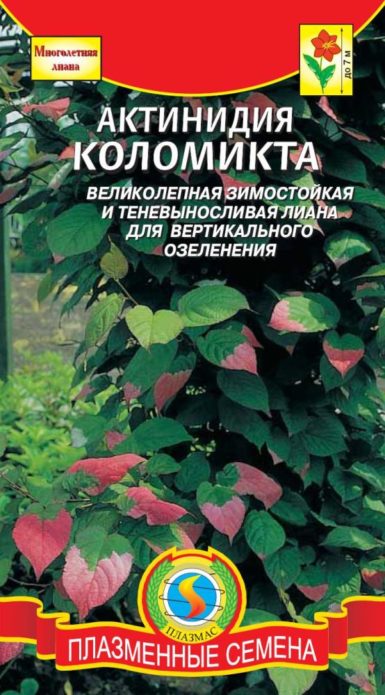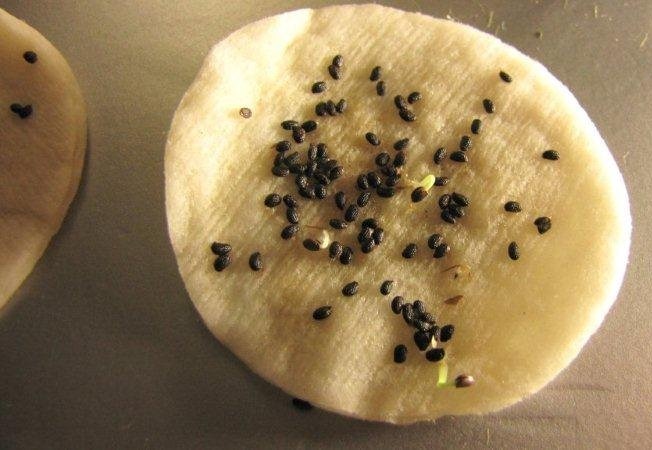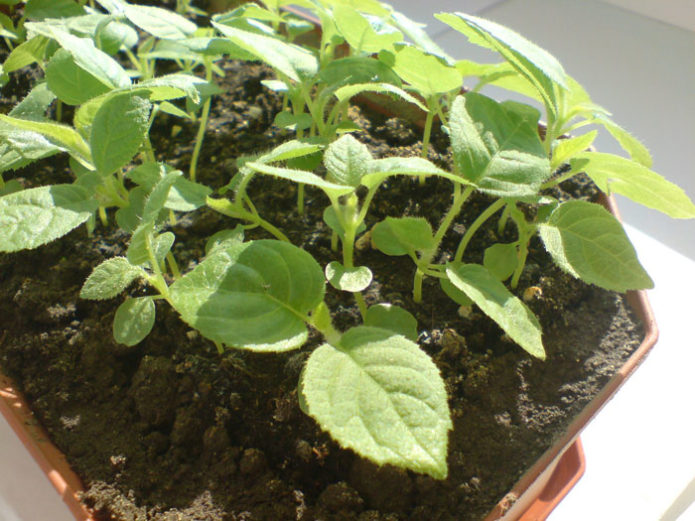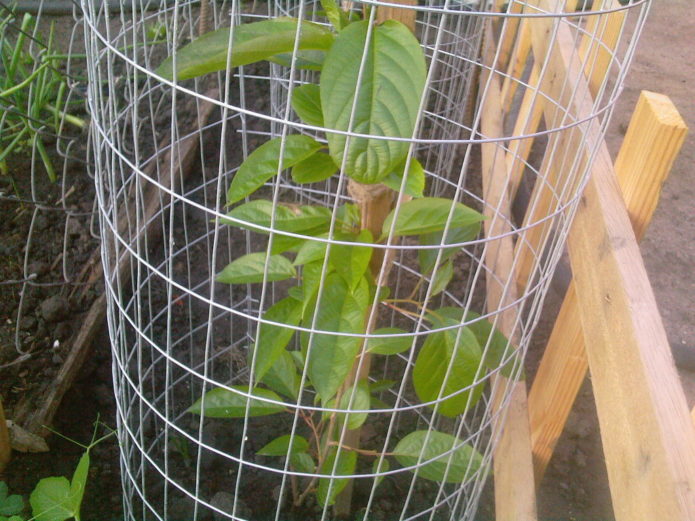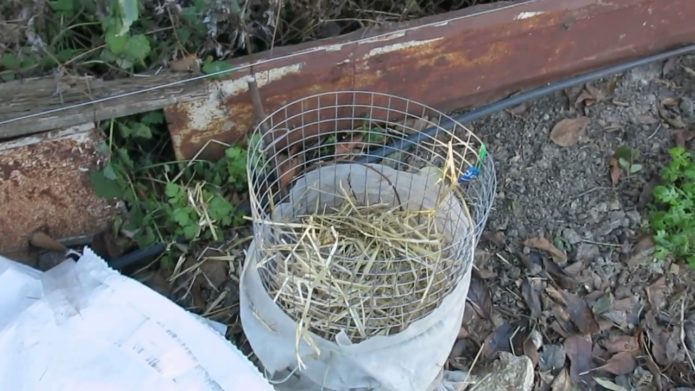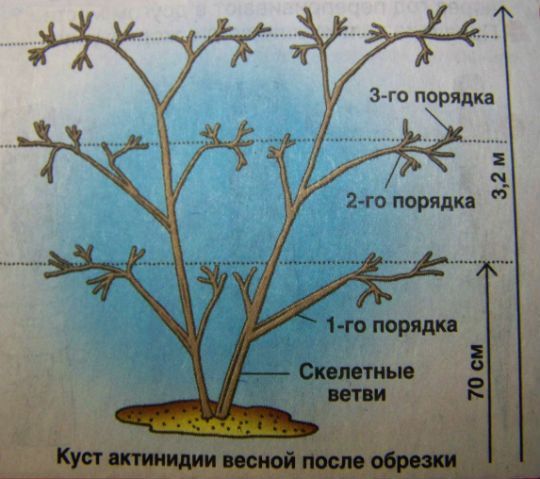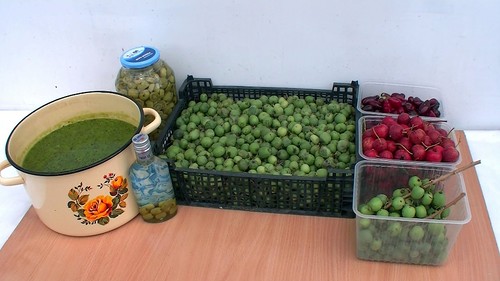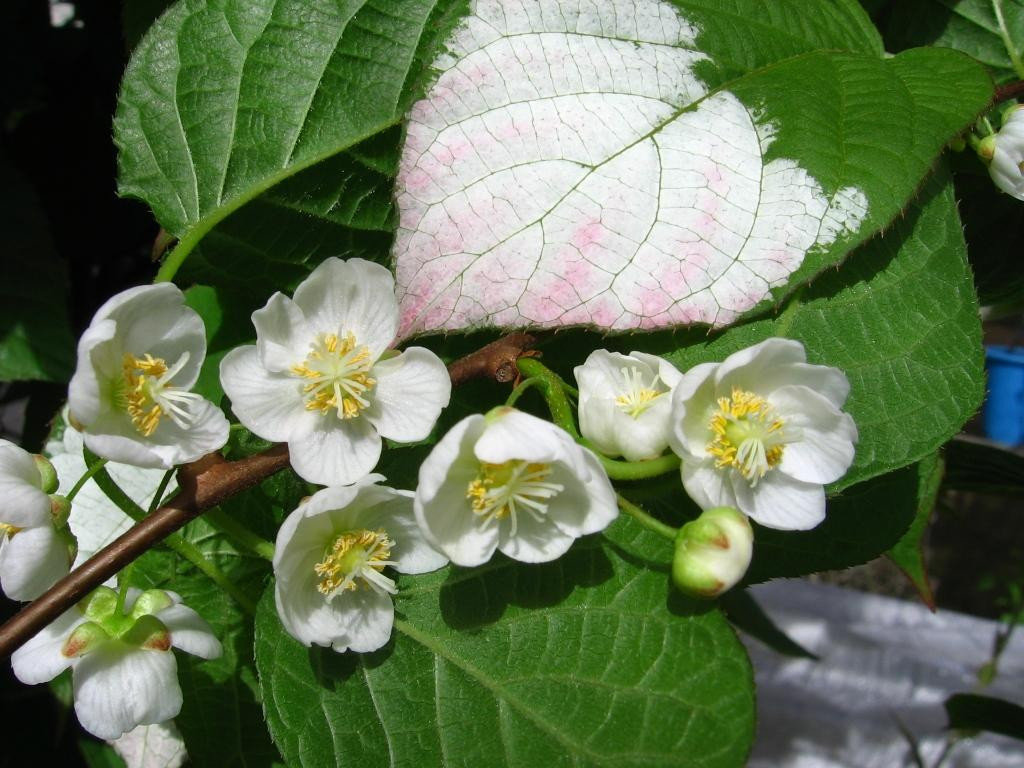Many Siberian gardeners do not even know that they can grow kiwi's closest relative, kolomikta, on their plots. Both of these species are actinidia and produce fruits with identical taste. But kiwi is a very thermophilic plant with a growing season of 245 days, and kolomikta tolerates frosts down to -40 ⁰C. The Siberian liana blooms in May-June, the harvest ripens in August, but the fruits, of course, are smaller than those of a southerly relative.
Content
Growing actinidia in Siberia
About 75 species of actinidia are known, of which the most popular in Russia are arguta and kolomikta. Both are found wild in the Far East. Arguta is the largest liana of the genus, it grows up to 30 m. However, it is thermophilic and feels good only in the mild climate of the sea coast, in dry forests, it is found in Japan and China. Kolomikta is the most winter-hardy of the actinidia. Culture in Russia was officially recognized as fruit only in 1999. More than 30 varieties are included in the State Register. They are approved for cultivation in all regions of the Russian Federation, including the northern ones, where the period with above-zero temperatures lasts only 105-160 days.
Video: actinidia kolomikta in Kuzbass
The choice of planting material
When buying actinidia, keep in mind that only dioecious varieties have been bred and registered by Russian breeders. This means that there are male plants that only bloom, and female plants that both bloom and bear fruit. In Siberia, the culture is not widespread, especially the official varieties. Most often, seedlings are brought from the taiga or taken from neighbors. At the same time, self-fertile colomicts are sometimes found on sale and in gardens. Although scientists are inclined to the version that these are female bushes, and pollen gets on them from male ones growing somewhere in the neighborhood.
In most cases, Siberians find seedlings under the names: "actinidia", "kolomikta", "actinidia pollinator", that is, without specifying the variety. The same problem arises when choosing seeds. Although regarding seeds, the absence of a variety name is true. Seedlings do not replicate their maternal properties. It is from the seeds that different varieties are derived, selecting the most productive with delicious fruits.
Kolomikta female varieties tested in Siberia: Compact, Novosibirsk early, Borisovskaya, Large-fruited, Pineapple. Male varieties for pollination: Snowball, Commander. Attention: different types of actinidia do not cross-pollinate among themselves. So, for the "girl" of the kolomikta the "boy" of the argument will be useless.
Growing actinidia kolomikta from seeds
In Siberia, buying kolomikta seeds is easier than finding seedlings.But seed reproduction has few advantages, the main ones being the low price of a bag of seeds and the ability to grow unique varieties from scratch, and then make an independent selection of the best ones. By the way, both female and male plants can grow from seedlings, experienced ones say that there are more female and 50% female plants.
Among the disadvantages of growing from seeds:
- Seedlings enter the season of flowering and fruiting at the age of 7-9 years, and seedlings obtained from cuttings - at 4-5 years.
- The sex of the creeper cannot be determined until the moment of flowering, therefore, for 9 years you will be in the dark about the result of your experience.
- Seeds need a long and laborious stratification.
- Most of the seedlings die in the first weeks of life. From 10 seeds in a bag, you can only get two viable seedlings of unknown sex.
Video: fruiting kolomikta grown from seed
Stratification according to the system of the soil scientist Titlyanova A.A .:
- In early November, fill the seeds with water for 4–5 days, preferably with snow. The layer of water in the bowl is 1–2 cm. Change the water every day and rinse the seeds.
- Place the seeds in a humid environment, for example, sand, peat, sphagnum moss, then wrap them in a plastic bag and keep them at room temperature for 2 months - about + 18… + 20 ⁰C.
- Open the package once a week, mix and ventilate the seeds, moisten if necessary.
- For the next 2 months, keep the seeds on the bottom shelf of the refrigerator or place in a pot, cover with plywood and bury it in the garden, under snow at least 1 meter deep. The temperature during this period should be at the level of + 4… +7 ⁰C.
- Then transfer the seeds to a room with a temperature of + 10 ... +12 ⁰C, not higher!
- Again, every week, take out the seeds and ventilate for the time being, until the rudiments of the roots hatch.
There is experience in growing without stratification, but this requires fresh seeds, only taken from the fruit. They are also soaked for several days in water, then spread on a damp cloth or between cotton pads and wait for germination.
Sow naklyuvshuyus seeds in boxes or pots filled with loose soil (1 part of the earth and 2 parts of river sand) with a distance of 4-5 cm from each other. Embedding depth - 0.5 cm. Cover with glass or foil and place in a sunny and warm place. After the first true leaf grows on them, transfer the emerging seedlings to partial shade. It can be planted in open ground when the threat of frost has passed.
Kolomikty, despite frost resistance in winter, are sensitive to spring return frosts during the growing season. At -4 ⁰C leaves and flowers die off, at -8 ⁰C - shoots.
A place for actinidia in the garden, planting a seedling
In nature, kolomikta grows in large clusters in the taiga, on humus and drained soils, in the shade of cedars and deciduous trees. The conditions in the garden should be close to natural. Choose a place so that direct rays fall on the vine only in the morning, and during the day it needs a diffused shadow. The scorching midday sun will burn the leaves and young shoots. One of the placement options is the east and southeast side of the building or a high fence.
Video: rules for planting actinidia, briefly about leaving
Do not plant kolomikta next to bushes or fruit trees. Liana very quickly captures the adjacent territory. It grows as a climbing bush, the diameter of its trunks is 2–5 cm, its height is up to 15 m. In addition, it forms a powerful fibrous root system, which is located in the upper 30 cm of the soil and extends beyond the crown. Has this actinidia and cultivation features:
- does not tolerate liming;
- in the first year needs frequent watering;
- for the winter in Siberia, it will have to be laid on the ground along with the trellis, which means that there should be enough free space nearby.
Actinidia are called yielding, giving about 3 kg of fruit per bush. For this reason, several seedlings are usually planted in the same garden. For good pollination, 1 male is required for every 4–5 females. The distance in a row is 1.5–2 m, between rows - 2–3 m. The planting period for Siberia is spring, when the lianas have enough warm days ahead to root well and prepare for winter. And autumn here can end unexpectedly. It happens that snowfalls begin at the end of September - October.
Stages of planting kolomikta one / two year old seedling:
- Dig a hole 60 cm in diameter and 40 cm deep.
- Pour a bucket of humus or compost, 100 g of superphosphate and 30-40 g of potassium sulfate at the bottom. Mix well to distribute all the granules evenly in the soil.
- Form a mound from the resulting soil mixture in the center of the hole. Its height should be such that the root collar of the seedling installed on its top is at the level of the soil. It is impossible to deepen actinidia, you need to plant it at the same depth at which it grew in the nursery.
- Place the seedling on top of the mound and spread its roots along the slopes. If the kolomikta grew in a container and covered the whole clod of earth with roots, then transplant it by transshipment: water the seedling well, remove it from the container with a clod of earth and place it in the center of the hole.
- Fill the remaining voids with earth removed from the pit.
- Make a hole or irrigation ditch and water well - at least 1.5–2 buckets of water.
- Mulch with peat, compost, or cut grass.
Video: kolomikta immediately after planting
In many sources it is recommended to lay drainage at the bottom of the planting pit. Its purpose is to eliminate stagnation of water at the roots, which can cause their decay and death of the entire plant. However, this is true for heavy clayey soils, deep into which water does not seep well. In Siberia, taiga, sod-podzolic and chernozem soils with a high moisture capacity prevail.
Care of seedlings of actinidia kolomikta
Be sure to fence young plants with a net, since their delicate leaves and shoots attract cats, no worse than valerian. Adult lianas with lignified trunks do not need such protection. Keep the soil moist throughout the season after planting, but do not turn it into a swamp. Kolomikta does not like stagnant water. In dry weather, not only water, but also twice a day (morning and evening) spray the leaves of the seedlings with clean water.
It is not necessary to feed, shape and tie up the kolomikt in the first year. There are recommendations for low-growing varieties not to form the first 5-6 years, but to carry out only a garter and sanitary pruning, that is, to remove dry twigs and tops. In autumn, when the temperature during the day is around 0 ⁰C, sprinkle dry mulch around the bushes, lay the shoots on it and cover with spruce branches, brushwood, burlap and other breathable materials.
In the spring, remove the shelters at freezing temperatures and return to the place if frost is predicted. At this time, it is already more convenient to use a covering material. Protection in spring from return frosts is the most important measure in the care of kolomikta seedlings. Without shelter, absolutely all shoots can die, you will lose the plant.
Formation of the kolomikta bush
Another important feature, ignorance of which can lead to the death of actinidia - do all the pinching and trimming in the fall or in June, when the leaves have blossomed, shoots have begun to grow. In the spring, at the beginning of sap flow, damaged shoots "cry" strongly, lose a lot of juices and can dry out completely.
The principle of formation is quite simple if you understand how the bush works. Each liana consists of several main (skeletal) stems, which have one common root.You can adjust the height of these stems as you wish: if you have grown to the desired limit - pinch. On each lash (stem), lateral shoots grow, and on them, in turn, branches of the second and third order, together they form fruit links, and each skeletal stem with them is a fruit arm. The structure of the bush is similar to the grape. However, the sleeves of kolomikta retain their productivity for 3-4 years, and in grapes they need to be replaced with young ones every year.
Each bush should have 2-3 fruiting stems and the same number of young (coppice) stems growing to replace them.
Scheme of the formation of actinidia in Siberia:
- In the second year after planting, choose 2-3 strongest shoots from the shoots that have grown in the last season and tie them up, remove the rest.
- In mid-July, pinch the tops for lateral branching.
- In the third year, pinch the tops of the side shoots when they grow 50–70 cm long.
- At the age of 4, the vines begin to bear fruit, and they are replaced from the shoots by the same principle, start growing new ones.
- After 3-4 years of fruiting, remove old sleeves one at a time.
You can trim male bushes as you please, as long as they grow and blossom.
There is also a variant of horizontal cultivation, when the main lashes are placed along the surface of the earth, and the side shoots are tied vertically. But experts believe this method is good for males, which have only decorative value. For females, for good fruiting, natural conditions are needed, as in nature, where the main lashes rise vertically, and the shoots from them are distributed to the sides.
Video: Important Tips for Pruning Actinidia
Tie all the lashes to the trellises in the form of a fan. U-shaped strong structures are suitable as trellises. Lower thick clothesline or wire from the top bar. Ladders can be used. The main condition is that the structure should be such that in the fall you can lay all the vines together with ropes or supports on the ground.
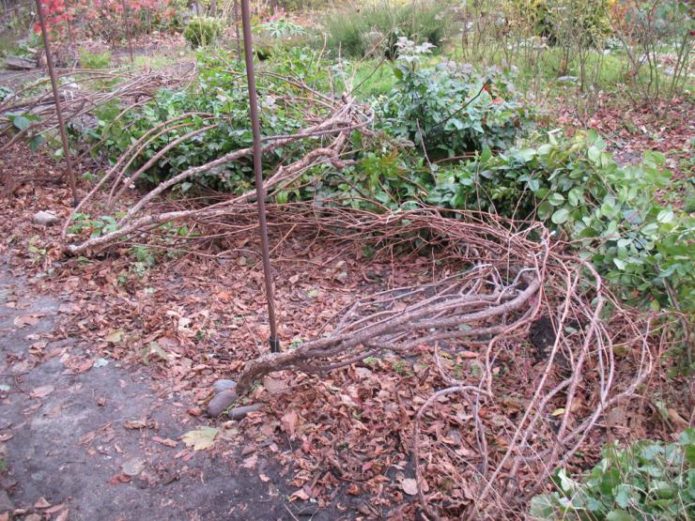
In Siberia, kolomikta lianas are removed from the trellises in the fall and laid on the ground so that in winter they would be under the snow
How to care for adult kolomikts
Water actinidia that have entered fruiting only in dry weather, spending 2-3 buckets per bush. The roots of the kolomikta are superficial, so loosen the ground under them carefully, no deeper than 3-5 cm. Mulch will help to reduce watering, keep the soil loose and do without fertilizing. Cover the base of the vines with a layer of humus, compost, or dry grass. Add fresh bedding as it decays. They say that actinidia has enough of its own leaves as fertilizer, which crumble in autumn and turn into humus during the next season.
Video: actinidia in Novosibirsk
In addition to shaping, carry out sanitary and thinning pruning. Remove all frozen shoots and tops, as well as twigs that intertwine and obscure each other. In the fall, as with seedlings, spread dry mulch, remove the bushes from the supports and lay them on the ground. Adult kolomikts no longer need additional protection in the form of spruce branches, straw and other materials, a natural snow shelter is enough. Spring frosts can destroy the growth of the last year, but the lignified stems and dormant buds on them will survive. Over the summer, the vine will recover. However, during flowering, if frost is transmitted at night, and you want to get a harvest, then the kolomikta needs to be covered.
Harvesting of actinidia kolomikta in Siberia
Fruits of early varieties ripen in early August, mid-ripening ones - after August 10, and late ones - at the end of the month. Kolomikta is prone to shedding. You should not wait for the full ripeness of Siberian kiwi, they ripen perfectly at home. In addition, the poured berries are very tender and juicy, unsuitable for transportation. It is recommended to start harvesting when only 10% of the crop is ripe.Fold the still dense and green fruits in paper bags and keep them at room temperature. Mini kiwis will ripen in 2–4 days. Choose ripe, use fresh, or recycle every day.
There is a practice to leave the harvest until late autumn. It is believed that under the influence of frost, immature fruits lose their astringency, become sweet and soft. This is true, but they are significantly inferior in taste to those that were ripened at room temperature.
The actinidia kolomikta berries taste sugary, you can't eat a lot in one go, and you don't need to, since they have a laxative effect. In terms of its composition, this is an excellent multivitamin remedy, and in terms of the content of vitamin C, kolomikta surpasses currants, lemon, and is close to rose hips. Suitable for all types of winter preparations: preserves, jams, juices, jellies. The fruits are frozen and even made into wine. Dried with a taste reminiscent of raisins.
Video: recipe for actinidia, mashed with sugar
Actinidia is not grown commercially in Siberia, possibly due to laborious frost protection. In the Far East, where the climate is milder, lianas are often found in the wild, and in a wide variety: with fruits in the form of a barrel, a heart, with a sharp and curved tip. The actinidia fishery is more relevant here. In Western Siberia, as in many other territories of the region, even frost-resistant kolomikta remains exotic, its fruits are not sold on a large scale. Due to the lack of demand among the population, seedlings are also rare, not every fruit nursery grows and sells them.
There are only two features of growing actinidia in Siberia, but they are significant. The first is that it is difficult to find good varietal seedlings, there are none at all on the periphery, far from the regional and regional centers. Second, strong trellises are needed, while the vines need to be removed from them every autumn and laid on the ground, and wrapped in spring, protecting them from recurrent frosts.

